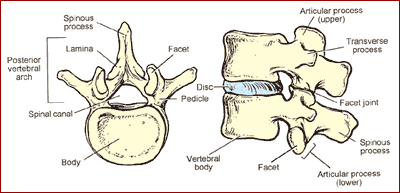Back pain, with or without radiation to the legs is one of the most common ailments in society. In fact, it is one of the most common reasons why patients seek medical advice. Even if you personally haven’t had an issue with back pain, I’m sure you know someone or are related to someone who has! In addition to it being so common, back pain can describe a broad range of symptom severity, ranging from a slightly bothersome twinge to incapacitating disability. No matter what it feels like to you, it’s important to keep three concepts in mind when dealing with your back pain:
- While there is no quick fix, in most patients symptoms respond well to conservative management.
- Treatments include a broad range of modalities, including medications, physical therapy, chiropractic care, acupuncture, as well as injections and other procedures.
- Physical therapy (PT) is one of the best treatments for low back pain according to the American Academy of Orthopaedic Surgeons (AAOS)!
Physical therapy harnesses the power of strengthening, stretching, mobilization, conditioning, and aerobic exercises. Here is a closer look at some of the therapeutic modalities that PT may focus on:
- Mobilization
- Joint mobilization is defined as movement within a joint’s normal range of motion. You can imagine for example a knee moving from full extension to full flexion. Usually this does not cause cavitation or joint popping sounds.
- This motion stretches out the synovial tissues or lining of the joint surfaces, causing the release of endorphins and the stretching of adhesions along with muscle relaxation.
- Extension exercises
- These can be useful for patients who have more pain while sitting or flexing forward.
- If the disc (which lies more anterior in the spinal column) is the pain generator, then these exercises can help unload the pressure on the disc by restoring lumbar lordosis (sway-back), thus reducing pain.
- Flexion exercises
- Flexion-based exercises work to strengthen the core, and are a cornerstone of most low back pain treatment regimens. Historically, they have been used most successfully in patients with pain on extension, which places more stress on the small joints in the back part of the spinal column called the facet joints.
- Core strengthening
- These exercises specifically work on the abdominal and pelvic floor muscles to strengthen the transverse abdominis and multifidus which are useful for nearly all lumbar conditions.
- Aerobic training
- There are so many benefits to aerobic exercise beyond just treating back pain but it can make an enormous difference in this realm as well. The major benefits of exercises such as biking, elliptical training, stair climbing, and swimming are to greatly increase core strength, all while helping with weight loss.
- Passive modalities
- There are multiple other passive modalities that can aid in treating low back pain. Application of ice, heat, anti-inflammatory topical remedies, and transcutaneous electrical nerve stimulation (TENS) can all be used in the acute phase to help treat muscle spasm, which can be a catalyst to back pain.
If a patient’s low back pain fails to improve after a period of 4-6 weeks, then obtaining imaging such as x-rays or perhaps even an MRI is appropriate. But it is also important to point out that it may take up to 3-6 months of physical therapy to see resolution of symptoms. And often times the most curative treatments for low back pain revolve around meaningful life-style modifications such as a healthy diet and weight loss.
In summary, the vast majority of low back pain can be treated conservatively and only under rare circumstances is surgery beneficial (for example when the bones are moving on each other in an unstable way). With a structured physical therapy regimen, a healthy diet, and exercise program, most back pain is alleviated on a permanent basis. While there is no overnight fix, proper adherence to the above therapy regimens have a proven track record of effectively treating this common and disabling condition.


